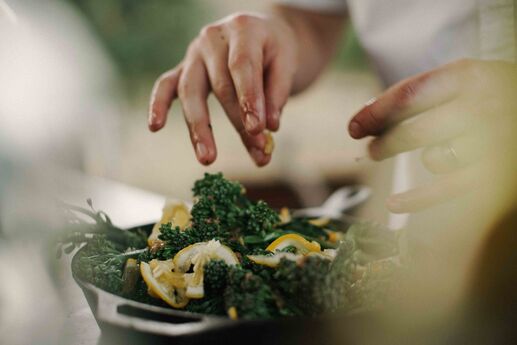The Cardio Myth
If you’ve taken up running, biking or swimming to get rid of a bulging belly, you’re hardly alone. But you may be wasting your time. If you really want to lose weight, claims Alwyn Cosgrove -- a certified strength conditioning specialist who is also the co-author of The New Rules of Lifting for Abs and owner of one of Men’s Health magazine’s top 10 gyms in America, Results Fitness in Santa Clarita, Calif. -- standard aerobic conditioning is simply not the most effective way to do it.
All of the trainers at Results Fitness subscribe to the theory that cardio just doesn’t work that well for fat loss. To find out why, we spoke to two of them. “It doesn’t promote the lean tissue growth required to elevate your metabolism and turn your body into a fat-burning machine,” begins fitness coach Brian Gilbert. Fellow fitness coach and certified strength conditioning specialist Charles Chattong goes on to explain that though you do burn more fat during cardio as compared to strength training, the minute the cardio stops, so does the fat burn. In contrast, he continues, “following a bout of high-intensity metabolic training [like weight training], the body’s metabolism remains elevated for several hours.”
So while the scale might tell you that you’re losing weight doing cardio, Gilbert says a closer look at your body composition would reveal that hardly anything has changed. In fact, the weight loss you’re seeing is usually the result of muscle loss. “Long bouts of aerobic conditioning will actually become a muscle-wasting exercise, which will lower your basal metabolic rate [how many calories you burn a day] and hinder your ability to burn fat,” he says.
In other words, your body will actually begin to tap into your hard-won muscle stores in order to meet the energy demands of the exercise. In a nutshell, says Gilbert, “you weigh less, but you’ve simply become a smaller version of your previous self.” Ouch … not exactly the goal most guys have in mind.
What we want is less fat and leaner muscles, right? So after chucking the cardio (and suddenly having much more training time at your disposal), your next step is to incorporate what Gilbert says are the two key components of any great fat-loss program: 1) Excellent nutrition and 2) Strength training that will increase your lean tissue and kick that metabolic rate into high gear.
Specifically, Chattong recommends that you embark on a program with both full-body metabolic resistance training and high-intensity interval training -- a combination that places a significant anaerobic demand on the body. That demand, says Chattong, ramps your metabolism up without sacrificing lean muscle mass.
To shed the fat and begin to sculpt the physique you desire, follow the workout below, which was designed by Chattong:
- Train four times a week.
- Alternate between workout Nos. 1 and 2, but never work out three days in a row.
- Warm up before every workout with arm swings, lunges, and downward-facing dog and upward-facing dog poses.
- Superset the A and B moves (i.e., do them back-to-back, without any rest in between). The rest comes after each superset is completed.
WORKOUT No. 1
|
|
Sets |
Reps |
Rest |
Core training |
|
|
|
|
A) Front plank (demo) |
1-2 |
45-60s |
0 |
|
B) Tall kneeling cable chop (demo) |
1-2 |
12 reps/side |
45s |
|
|
|
|
|
Power Training |
|
|
|
|
Med ball chest pass (demo) |
3-4 |
10 reps |
45s |
|
|
|
|
|
Resistance Training |
|
|
|
|
A) KB/DB goblet squat (demo) |
2-3 |
12-15 reps |
60s |
|
B) One-arm DB row on bench (demo) |
2-3 |
12-15 reps |
60s |
|
|
|
|
|
|
A) Sprinter step up (demo) |
2-3 |
12-15 reps |
60s |
|
B) Cable pull down (demo) |
2-3 |
12-15 reps |
60s |
|
|
|
|
|
Interval training |
|
|
|
Sprint |
6 |
60 yards |
90s |
WORKOUT No. 2
|
|
Sets |
Reps |
Rest |
Core training |
|
|
|
|
A) Side plank (demo) |
1-2 |
20-30s |
0 |
|
B) Stability ball jackknife (demo) |
1-2 |
10 reps |
45s |
|
|
|
|
|
Combination Movement |
|
|
|
|
Squat to DB press (demo) |
2-3 |
10 reps |
45s |
|
|
|
|
|
Resistance Training |
|
|
|
|
A) SHELC (demo) |
2-3 |
12-15 reps |
60s |
|
B) T push-up (demo) |
2-3 |
12-15 reps |
60s |
|
|
|
|
|
|
A) Split squat (demo) |
2-3 |
12-15 reps |
60s |
|
B) Alternating DB shoulder press (demo) |
2-3 |
12-15 reps |
60s |
|
|
|
|
|
Interval training |
|
|
|
Rowing machine (or sprint again) |
6 |
15 seconds |
90s |






